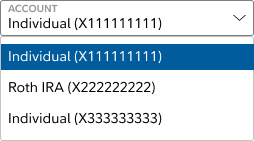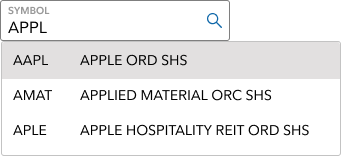Trading made simple: How to trade stocks and ETFs
Get familiar with trading at Fidelity.
Watch just how easy it is to place a stock and ETF trade with tips on how to choose an order type and order duration.
Check out additional resources:
- Step-by-step guide with 6 simple steps
- FAQs on order types, settlement, and more
Step-by-step guide
| 1. Select the account you want to trade in. |  |
| 2. Enter the trading symbol. |  |
| 3. Select Buy or Sell. |  |
| 4. Choose between Dollars and Shares, then enter an amount.
|
 |
| 5. Choose an order type: Market or Limit. Use the definitions to help make a choice. Read more about using order types
|
 |
| 6. For limit orders, decide how long the order will stay open. Day or Good 'til Canceled (GTC). Use the definitions to help make a choice.
|
 |
After you've entered these details, preview your order and if all looks good, click Place Order and you're done placing your trade.






